The Ancient Practice of Lunar Gardening
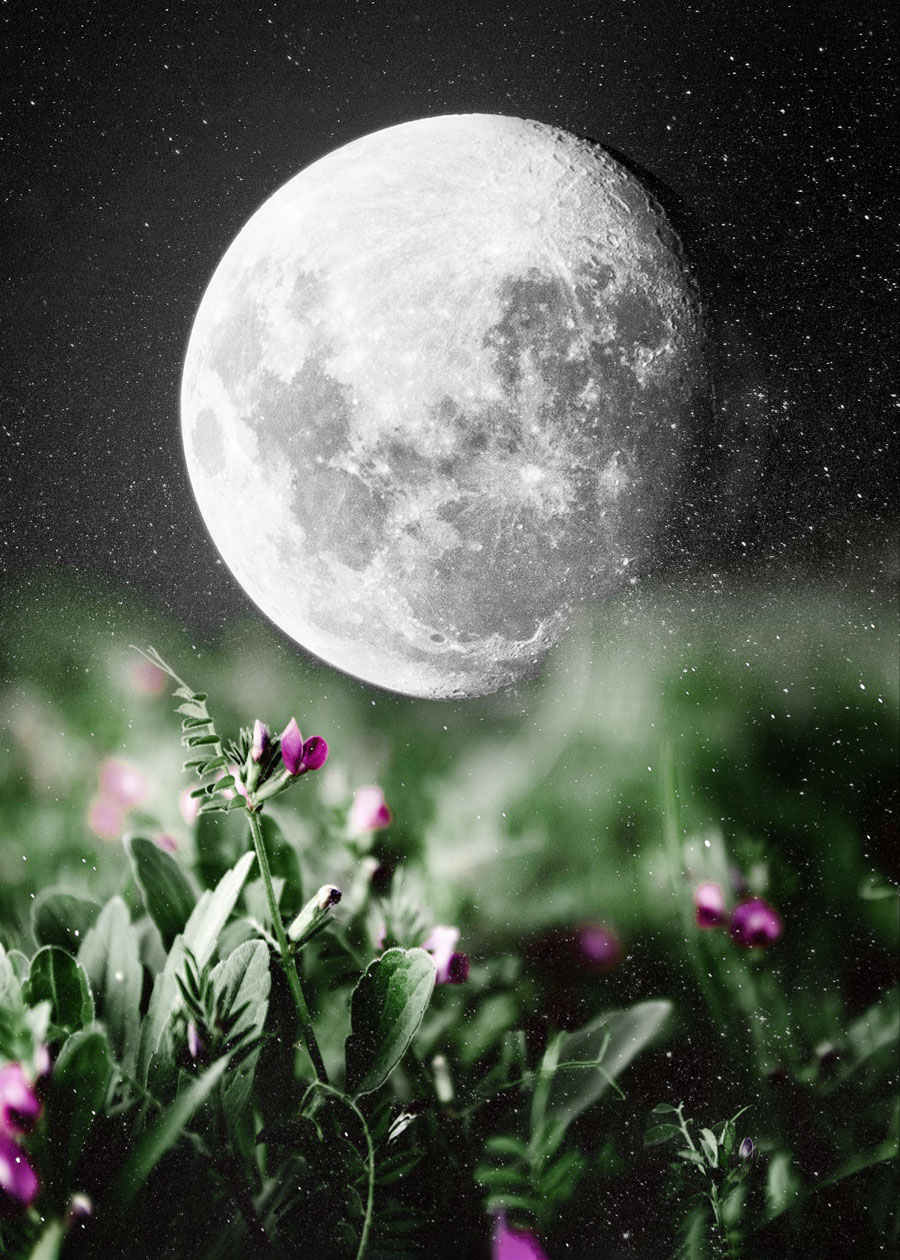
Backed by thousands of years of tradition, lunar gardening harnesses the power of the magnetic and gravitational impact of the Moon. The Earth is one big gravitational field influenced by celestial forces. Just as the Moon pulls the tides in the oceans, our ancestors believed the Moon also pulled subtle bodies of water, like moisture in the soil. Ancient cultures structured their world around the Moon as they watched it disappear and reappear in the night sky.
The Aztec Priests had a 260-day lunar calendar that they used for agricultural guidance. The survival of the Egyptians depended upon knowing when the Nile would flood, which provided irrigation for their crops. The Celtic Druids, Chinese, and many North American indigenous cultures relied on a 13-moon calendar to plant, forage, and harvest medicine and food.
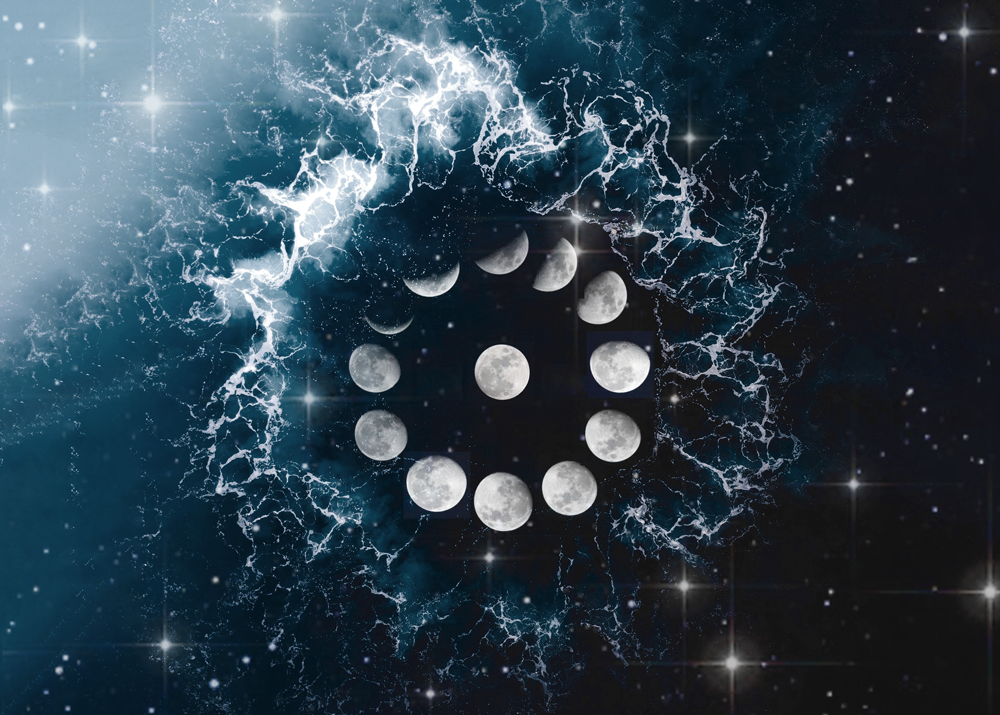
It might sound like superstition, but there has been some modern-day research done on the topic. Maria Thun, a biodynamic farmer, has tested planting by the moon cycles for years and claims that it does improve planting yield. Due to the lack of scientific research regarding the direct effect of lunar phases on plant physiology, much of the evidence comes from documentation performed by farmers and scientists that have repeated Thun’s methods and found similar outcomes. Of course, a successful garden does not require following the phases of the moon, lunar gardening is thought to facilitate positive results.
Lunar Gardening
an ancient practice
rooted in the idea that the Moon’s
cycle affects plant growth.
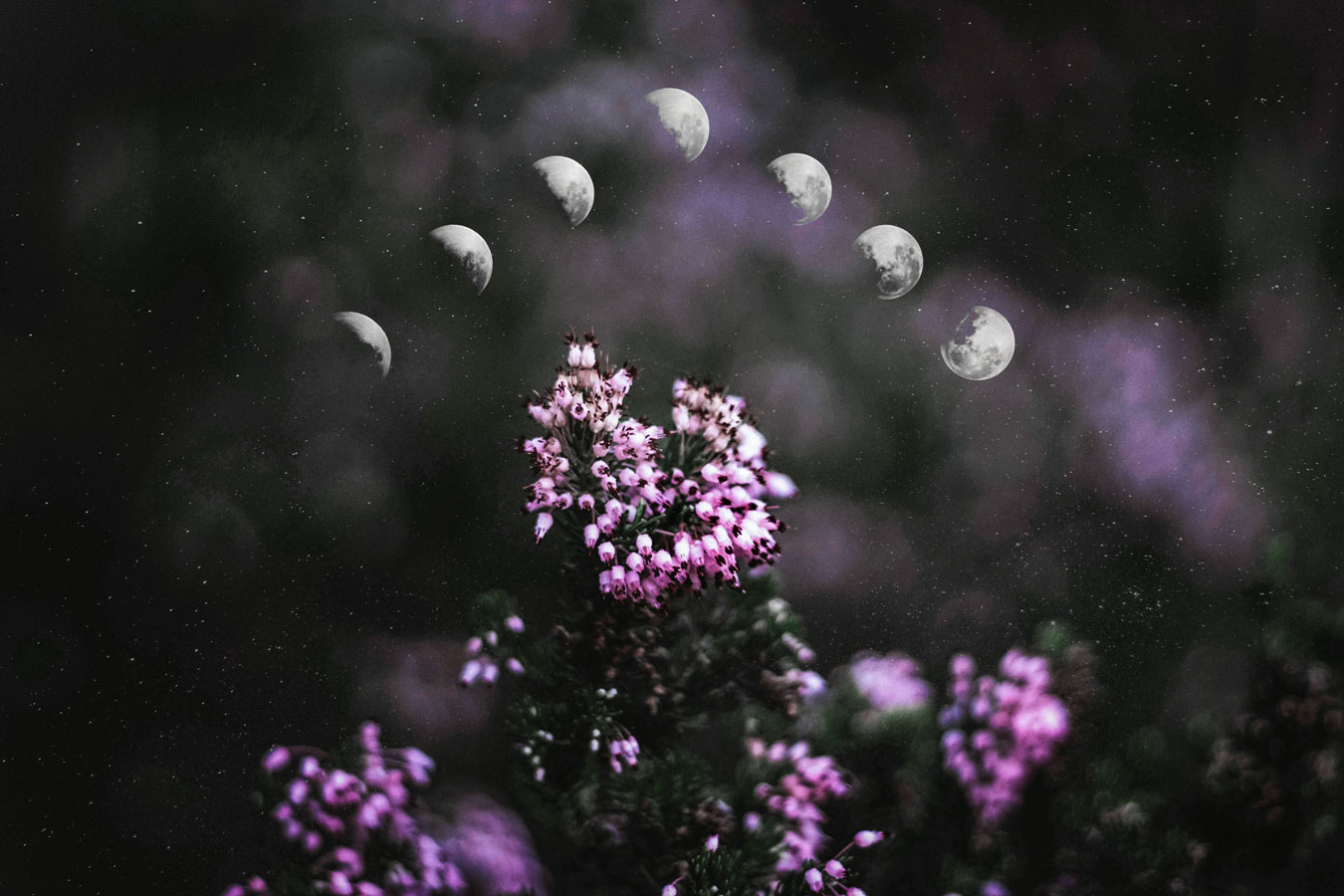
Over the course of the 29.5 day lunar cycle, the moonlight goes through fluctuation. For half of its cycle, between the New and Full moon, the Moon grows in illumination creating the Waxing period. Then, from the Full Moon to the New Moon it begins to decrease in illumination, creating the Waning period.
Waxing Moon the light of the moon
The general rule of thumb is to plant your annual fruits, vegetables, and flowers that bear above-ground crops like peppers, melons, and corn during the waxing of the Moon. From the New Moon to the Full Moon the light grows and the gravitational pull is strong. This is when the soil releases, energy draws upward, and the Earth exhales.
Waning Moon The dark of the moon
The general rule of thumb is to plant root crops like carrots and potatoes, along with perennials and transplants, during the waning of the Moon. From the Full Moon to the New Moon the light and gravitational pull decrease. This is when the soil absorbs, energy draws down, and the Earth inhales.
Moon Sowing
In short:
WAXING CRESCENT :: plant leafy greens.
WAXING GIBBOUS :: plant fruiting annuals.
WANING GIBBOUS :: plant root crops and perennials.
WANING CRESCENT :: rest and maintenance period.
New Moon
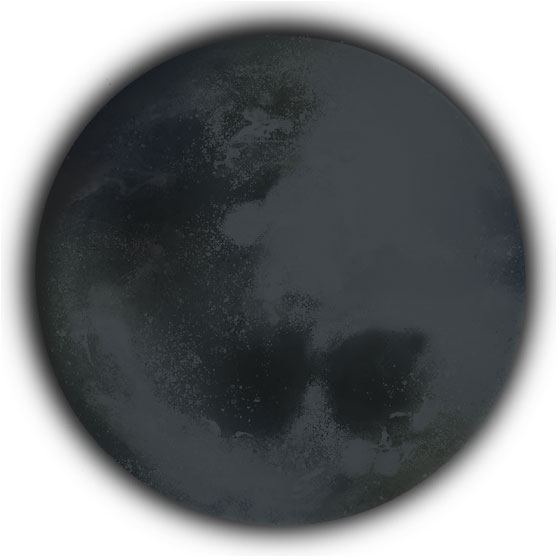
DAY 0
The ancient Greeks believed the New Moon was a time of fertility and rebirth because the moon and sun were joined together in the same part of the sky.
When the moon is New, or dark, it exerts a strong gravitational pull on the earth, and tides are high. The groundwater level beneath the soil is lifted the same way tides are lifted, and in this gravitational pull, the roots of plants experience a growth spurt. From the New Moon to the Full Moon sap flow increases in the above-ground parts of plants. These are the most suitable phases for sowing and transplanting annuals and biennials.
Waxing Crescent
Phase
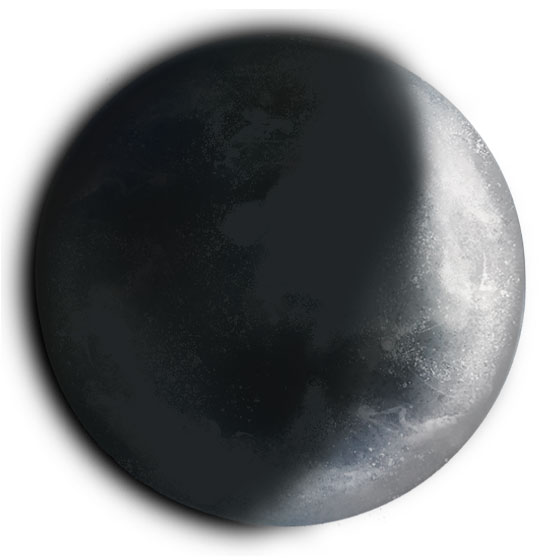
DAYS 1 – 6
The Waxing Crescent phase will appear just a few days after the New Moon. This phase provides fertile and wet soil conditions. Moonlight is increasing and the gravitational pull is at its strongest drawing water up, which aids in germination.
• Sow/Plant: Plant above-ground bearing annual crops that produce their seeds outside of the fruit like lettuce, broccoli, celery, and grains. It is also a good time to plant annual grasses and green manures. *This is the second-best phase to sow or transplant fruiting annuals.
• Tend: Graft, apply liquid fertilizers, mow, and prune foliage (to encourage growth).
First Quarter
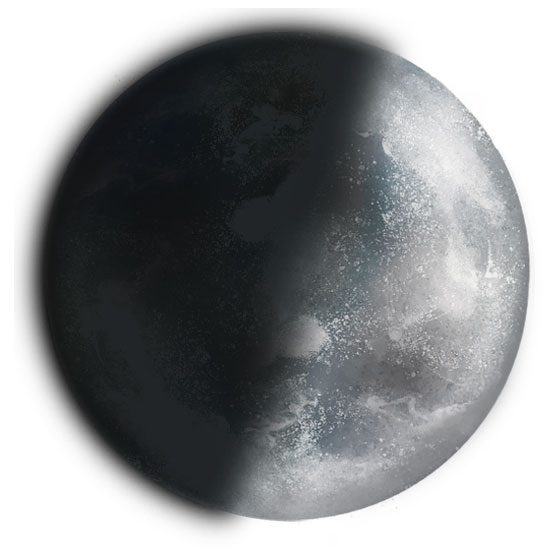
DAY 7
During the first quarter, the sun and moon are at a right angle to Earth, causing a lower gravitational pull. But the moonlight is strong, creating healthy leaf development. The leaves grow at a faster rate than the roots, which set down strong legs during the first week of the lunar cycle. This allows the plant to “reach to the sky” during the progression to the full moon. Plants that grow well during this time are those with larger leaves such as squash, melons, and beans.
Waxing Gibbous
Phase
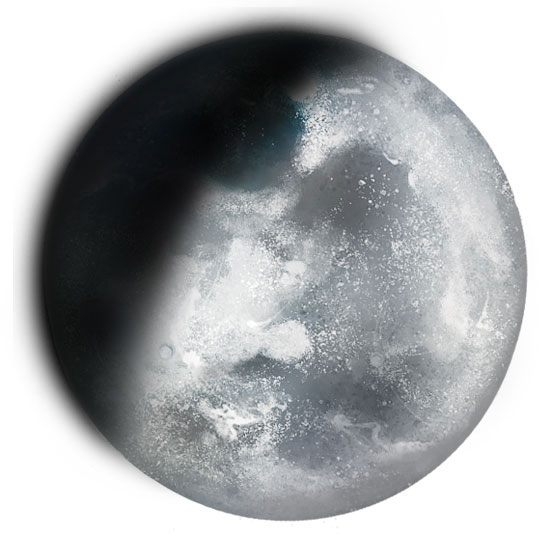
DAYS 8 – 13
During the Waxing Gibbous phase (First Quarter to the Full Moon):
• Sow/Plant: Plant annuals that produce above-ground – fruiting plants with “inside seeds,” like tomatoes, beans, grains, flowers. It’s also a good time to sow annual grasses and green manures *This is the second-best phase to sow or transplant leafy annuals.
• Tend: Graft, apply liquid fertilizers, mow and prune foliage (to encourage growth).
“Plant seeds with kind thoughts three days before the full moon.”
– Traditional Iroquois saying
Full Moon

DAYS 14 – 15
The moon has peaked. On the night of a Full Moon, it is time to rest, celebrate, and meditate. It’s also a good time to pick medicinal herbs and plants.
From the Full Moon to the New Moon the sap flow in plants becomes more concentrated in the root area and gradually slows through the Waning period reducing germination and regrowth.
Waning Gibbous
Phase
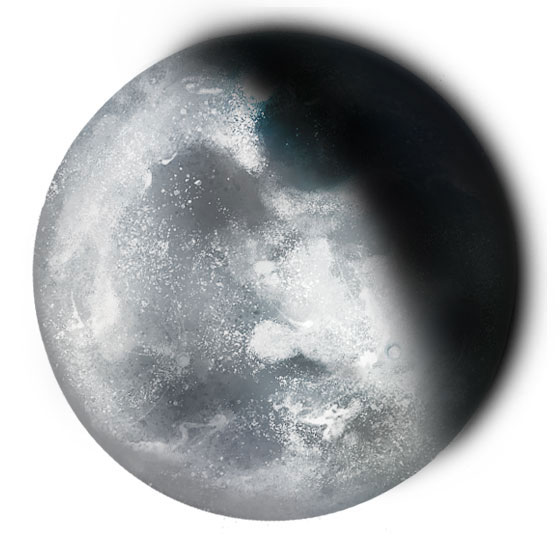
DAYS 16 – 21
During the Waning Gibbous phase (Full Moon to the Last Quarter), the gravitation pull is high, creating more moisture in the soil. Plant roots experience another growth spurt, while leaf growth remains relatively static. In the Waning period this is the best phase for sowing and planting:
• Sow/Plant: Plant below ground root plants like beets, carrots, onions, and potatoes. It is also a good time to plant perennials, fruiting trees, bulbs, and transplants because of the active root growth. Just like root vegetables, perennials’ root systems have the ability to store carbohydrates and nutrients which is vital to their longevity.
• Tend: Harvest all crops, take cuttings, divide plants, prune dormant plants, apply solid fertilizers, transplant, mow, and prune foliage (to hinder growth).
Last Quarter
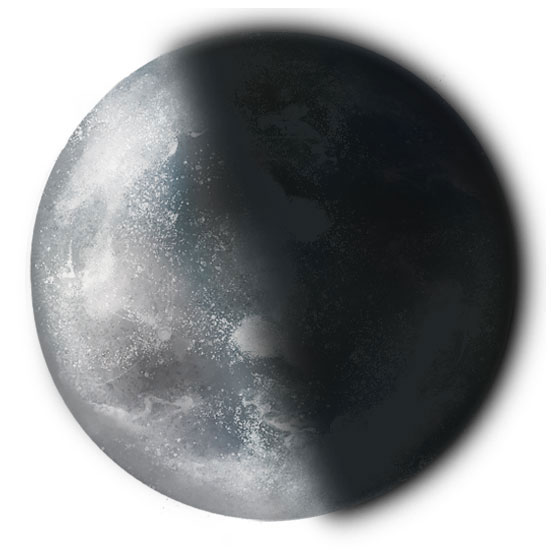
DAY 22
As the moon goes dark and gravitation pull falls away, plants experience a time of balanced rest, where the rate of growth slows in both roots and leaves. The last quarter is considered a resting and maintenance period. It is a time to avoid planting and focus on improving the soil, by weeding, mulching, making compost, and so on.
Some say it is best not to partake in any garden chores during the last few days of the Last Quarter. The time right before a New Moon signifies the death of the old before the start of the new.
Waning Crescent
Phase
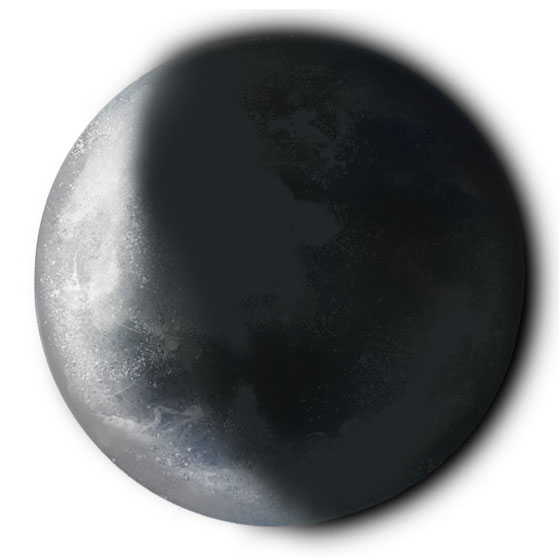
DAYS 23 – 28
During the Waning Crescent phase (Last Quarter to the New Moon), moonlight has decreased along with gravitational pull:
• Barren Phase: Avoid sowing seeds.
• Tend: Harvest and store crops, apply solid fertilizers, transplant, destroy weeds, prune foliage and mow lawns (to hinder growth).
New Moon

DAY 0
We have completed a full moon cycle and are starting anew. On the night of a New Moon, it’s time to rest and set new seeds of intention for the next cycle.
To get a better sense of the Moon’s movement, this video is a great visual:
Moon Phase Animation by Phil Heart
PERIGEE
SUPER MOON
APPEARS 14% LARGER
& 30% BRIGHTER
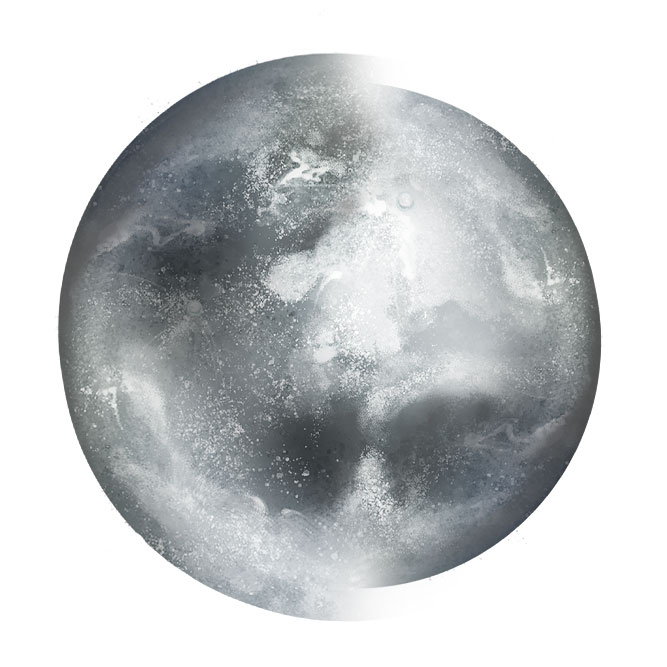
APOGEE
MICROMOON
Apogee Summer Mood
The Apogee is the point where the Moon’s orbit is the furthest from the Earth. Author Maria Thun described it as, “When the Moon recedes from the Earth in the course of its monthly cycle, the effect on plant growth can in some ways be compared with that time of year when the Earth is furthest away from the Sun, i.e. midsummer; the tendency in the plant-world is then to run to seed, whereas the growth forces decrease. Thus the effect of the Moon’s apogee on the seed plants can still be comparatively beneficial. For the sowing of leaf crops, however, this time is definitely unfavorable. Carrots sown during these days easily become woody. The only plant to react positively to being planted at apogee is the potato.”
Perigee Winter Mood
The Perigee is the point where the Moon’s orbit is the closest to the Earth. This has a much different effect. It invokes a winter mood because the Moon’s water element inhibits the Sun’s relationship with the Earth. Sown seeds might germinate poorly or the crop itself might be negatively affected due to too much water manifested in the upper plant. This can be positive for leafy crops that thrive with a surplus of water. According to European traditions, any work with soil or plants on the day of the Perigee should be avoided as the Moon’s influence is too strong at this time.
SOURCES
• Traditional Moon Planting by Author Lyn Bagnal
• Biodynamic Gardening by John Soper, revised by Barbara Saunders-Davis and K Castelliz
• Work on the Land and the Constellations by Maria Thun
• North American Almanac by Maria Thun
• Why We Garden by the Moon by The Farmer’s Almanac
• Agricultural scholars Alan Chadwick and John Jeavons
• All imagery was created using Adobe Photoshop and photos under the Creative Commons license.
exit the matrix.

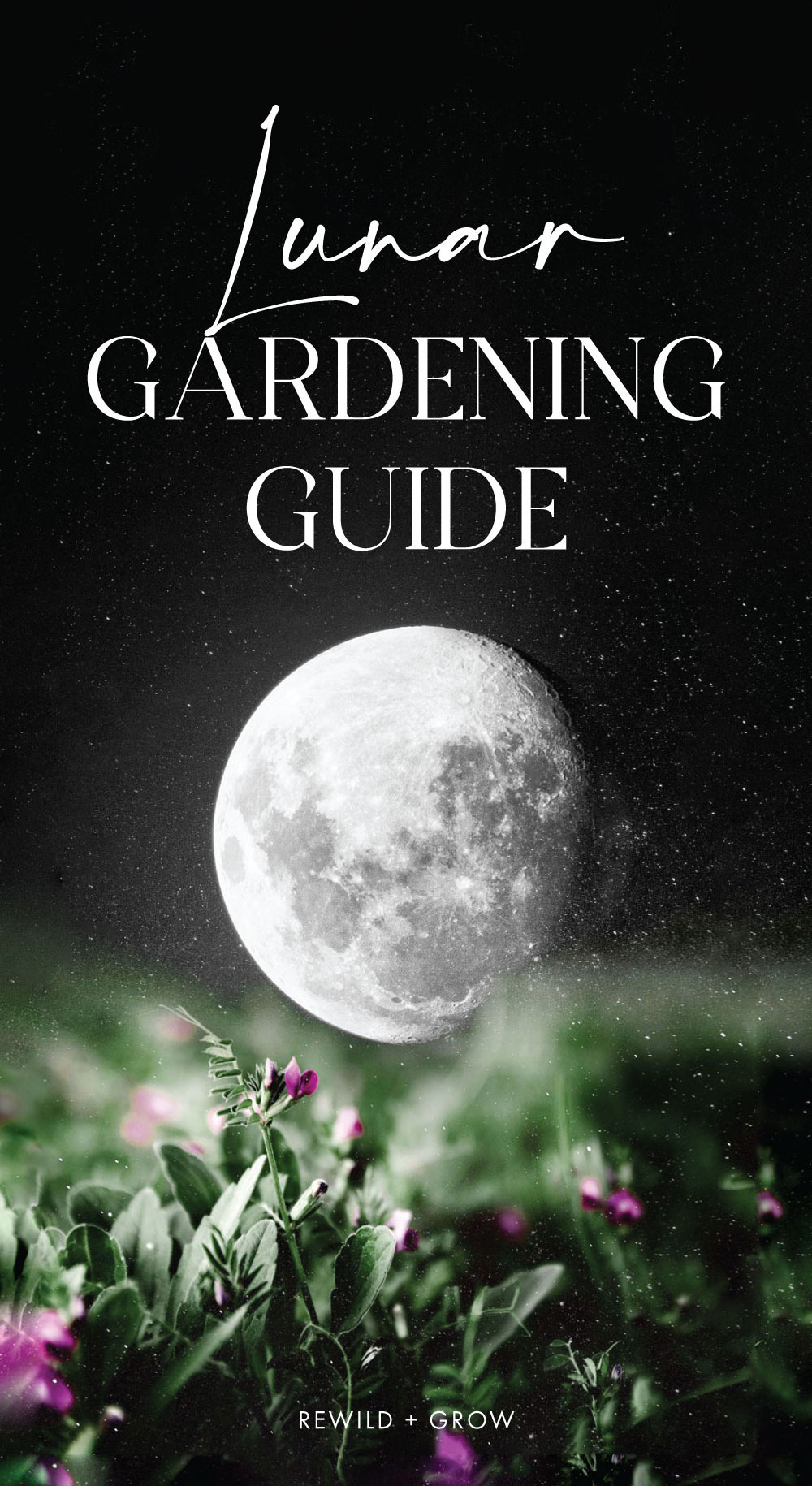

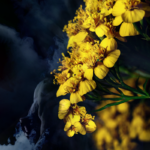


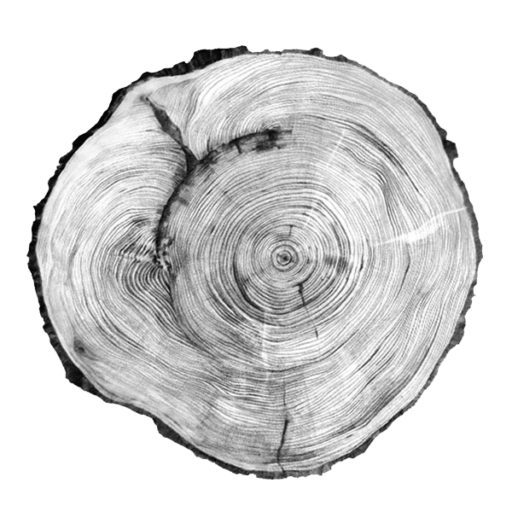
0 Comments